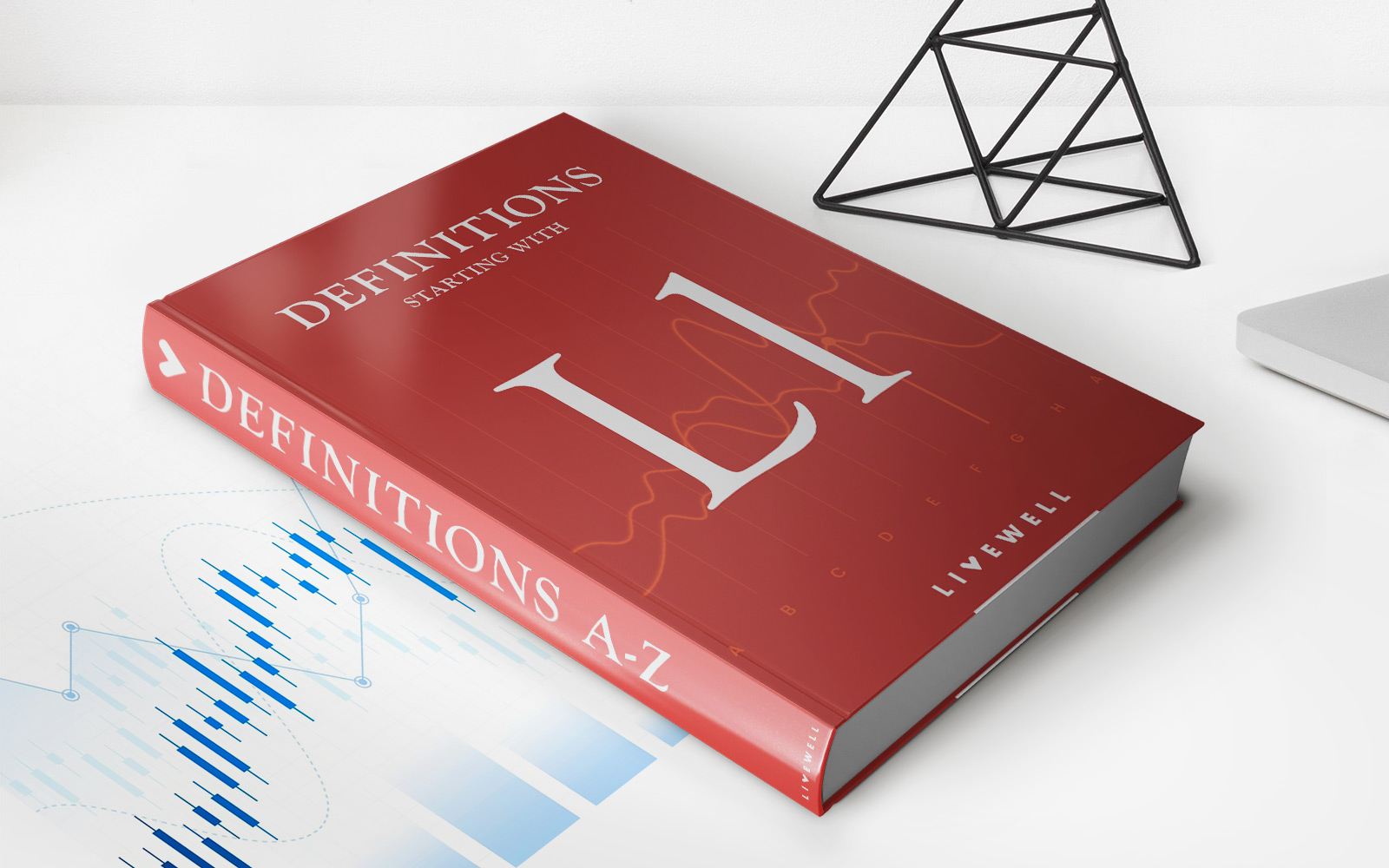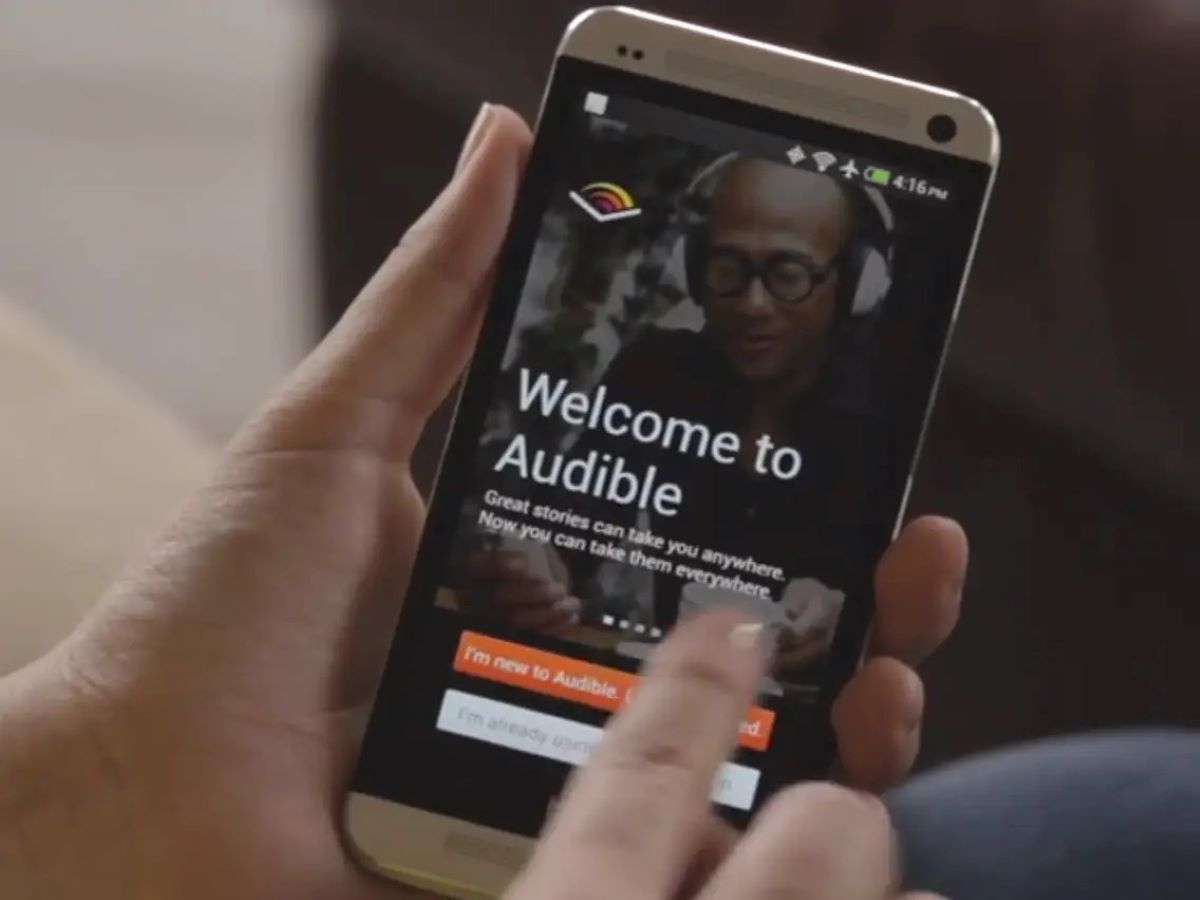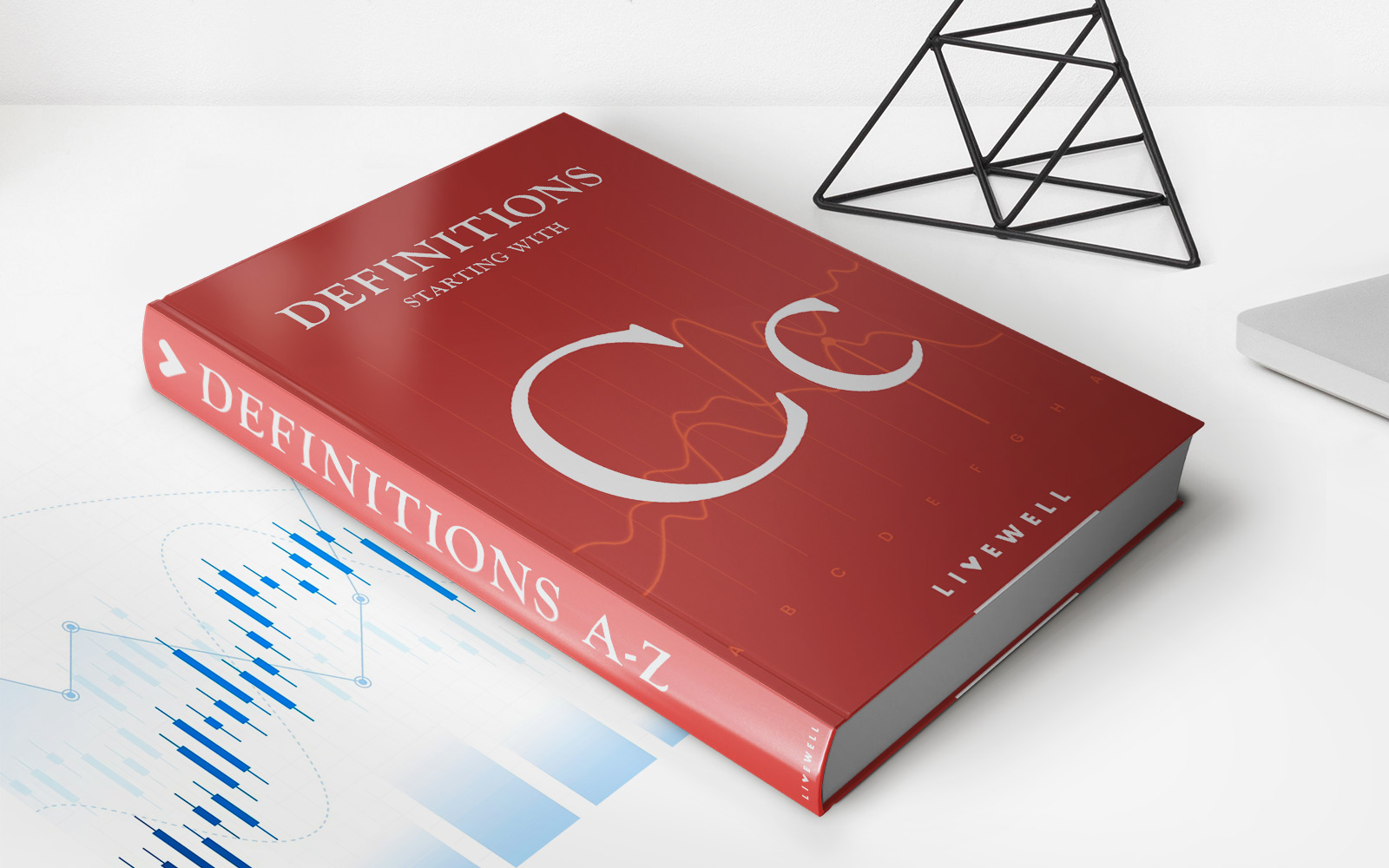

Finance
Why Is My Student Loan Balance Zero?
Published: October 20, 2023
Find out why your student loan balance is zero and discover the financial factors that could be affecting your loan repayment. Explore more about finance and student loans.
(Many of the links in this article redirect to a specific reviewed product. Your purchase of these products through affiliate links helps to generate commission for LiveWell, at no extra cost. Learn more)
Table of Contents
Introduction:
Student loans play a vital role in financing higher education for many individuals. They provide access to educational opportunities that might otherwise be unaffordable. However, when borrowers find themselves in a situation where their student loan balance is unexpectedly zero, it can be both confusing and a cause for celebration.
Understanding why a student loan balance is zero requires an examination of various factors, such as loan repayment, forgiveness programs, consolidation or refinancing, temporary suspension of payments, third-party payments, or even the possibility of an error or mistake. By exploring these possibilities, borrowers can gain clarity about their financial situation and make informed decisions.
This article will delve into the possible reasons why your student loan balance is zero. It is essential to note that each borrower’s situation is unique, and the circumstances may vary greatly. Therefore, it is always advisable to consult a financial advisor or loan servicer regarding any specific concerns or questions you may have.
Understanding Student Loan Balance:
Before we delve into the reasons why your student loan balance might be zero, it’s important to have a clear understanding of what exactly student loan balance entails. The loan balance represents the total amount of money you owe on your student loans, including the principal amount borrowed and any accrued interest.
Each month, your loan servicer applies your monthly payments towards both the principal balance and the accrued interest. As you make regular payments, the loan balance decreases over time. However, several factors can contribute to a student loan balance reaching zero before you expected.
It is essential to note that the loan balance can vary depending on the type of student loan you have, the interest rate, the repayment plan you’ve chosen, and any special circumstances or agreements.
Having a clear understanding of your student loan balance is crucial for managing your finances effectively. It allows you to track your progress in repaying the loan, make informed decisions about your repayment strategy, and identify any discrepancies or errors that may arise.
Now that we have a solid understanding of what student loan balance represents, let’s explore the potential reasons why your student loan balance may be zero.
Possible Reasons for a Zero Student Loan Balance:
There are several reasons why your student loan balance may be showing as zero. Here are some common explanations:
-
Loan Repayment:
If you have been diligently making your loan payments over time, it’s possible that you have successfully repaid your student loans in full. This is an achievement worth celebrating! Paying off your loans demonstrates your commitment to financial responsibility and allows you to move forward with a clean slate, free from the burden of student loan debt.
-
Loan Forgiveness:
Another possible reason for a zero student loan balance is loan forgiveness. Certain loan forgiveness programs, such as Public Service Loan Forgiveness (PSLF) or Teacher Loan Forgiveness, can discharge a portion or all of your remaining loan balance if you meet specific eligibility criteria. If you have completed the requirements and your loans were forgiven, your balance would naturally be reduced to zero.
-
Consolidation or Refinancing:
You may have chosen to consolidate or refinance your student loans, resulting in a new loan with a different lender or servicer. During the consolidation or refinancing process, your previous loans are paid off in full, and a new loan is created. As a result, your previous loan balance is cleared, and your new loan balance starts afresh. If this is the case, it is crucial to review the terms and conditions of your new loan to ensure you understand any changes in interest rates or repayment plans.
-
Temporary Suspension of Payments:
In certain situations, borrowers may qualify for temporary suspension of loan payments, such as through a deferment or forbearance. During these periods, your loan balance may remain unchanged or not accrue any additional interest. If you successfully completed a deferment or forbearance period, your loan balance may be reduced to zero.
-
Paid Off by a Third Party:
It is also possible that a third party, such as a relative, employer, or scholarship organization, may have paid off your student loans on your behalf. If this is the case, your loan servicer would update your account to reflect a zero balance.
-
Error or Mistake:
While less common, it is essential to consider the possibility of an error or mistake. It is possible that your loan servicer made an error in recording your payments, interest calculations, or loan status, resulting in an incorrect loan balance. If you suspect an error, it is crucial to reach out to your loan servicer and provide them with the necessary documentation to rectify the situation.
These are some of the possible reasons why your student loan balance may be showing as zero. It is important to review your loan statements, communicate with your loan servicer, and seek professional advice to ensure you have a comprehensive understanding of your loan status and any potential implications.
Loan Repayment:
One of the most common reasons why your student loan balance may be zero is that you have diligently made consistent payments over time, ultimately paying off your loan in full. Achieving this milestone is a significant accomplishment and can provide a sense of financial freedom.
When you make your loan payments, a portion goes towards repaying the principal amount borrowed, and another portion covers the accrued interest. As you continue to make these payments, your outstanding balance decreases. Once you make that final payment, your loan balance will reach zero.
Repaying your student loans in full not only eliminates the debt you owe, but it also brings many long-term benefits. It improves your credit history, increases your financial flexibility, and can open up opportunities for future borrowing, such as for a mortgage or car loan.
When your student loan balance reaches zero, it’s important to take the time to celebrate your achievement. You’ve demonstrated financial responsibility, discipline, and perseverance. However, it’s crucial to remain vigilant and keep track of your loan servicer’s communication to ensure the accurate closure of your account and avoid any unexpected issues.
If you find yourself in a situation where your loan balance is unexpectedly zero, double-check the information provided by your loan servicer. Verify that the loan has indeed been marked as fully repaid, ensuring there are no remaining outstanding balances or ongoing payments.
Remember, successfully repaying your student loans demonstrates your commitment to your financial obligations and sets a strong foundation for your future financial well-being.
Loan Forgiveness:
Loan forgiveness is another possible reason why your student loan balance may be showing as zero. Loan forgiveness programs are designed to relieve borrowers of their remaining loan balance under specific circumstances.
One of the most well-known loan forgiveness programs is the Public Service Loan Forgiveness (PSLF) program. This program is available to individuals who work full-time for qualifying government or nonprofit organizations and make 120 eligible payments while employed in a qualifying public service position. Once these criteria are met, the remaining loan balance is forgiven.
There are also other loan forgiveness programs available for specific professions, such as teachers, nurses, doctors, lawyers, and military personnel. These programs often have eligibility requirements related to working in underserved areas, low-income schools, or specific public service sectors.
If you qualify for a loan forgiveness program and have met all the necessary criteria, your remaining loan balance will be forgiven, resulting in a zero balance. It’s important to note that loan forgiveness programs typically have specific requirements and deadlines, so it’s crucial to stay informed and ensure that you meet all the necessary conditions to qualify for forgiveness.
Applying for loan forgiveness programs can be complex, and it’s recommended that you reach out to your loan servicer or a specialized loan forgiveness counselor for guidance. They can assist you in navigating the process, ensuring that you meet all the requirements for forgiveness and submit the necessary documentation.
Loan forgiveness offers a tremendous financial relief to borrowers, allowing them to start anew without the burden of student loan debt. If you find your student loan balance showing as zero due to loan forgiveness, take the time to understand the terms and conditions of the forgiveness program, as it can have long-term implications on your financial situation.
Consolidation or Refinancing:
If your student loan balance is showing as zero, it could be a result of consolidating or refinancing your loans. Consolidation and refinancing involve combining multiple loans into a single loan with more favorable terms and a new loan servicer. This process can lead to a zero balance on your previous loans.
Consolidation is a process where you combine multiple federal student loans into one loan. This can simplify loan repayment by providing a single monthly payment and extending the repayment term. When you consolidate your loans, your previous loan balances are paid off, and a new consolidated loan is created. As a result, your previous loan balance is cleared, and you start with a new loan balance represented by the consolidated loan amount.
Refinancing, on the other hand, involves replacing one or more existing loans with a new loan from a private lender. By refinancing, you may secure a lower interest rate, change your repayment terms, or switch from a fixed-rate loan to a variable-rate loan. When you refinance your loans, the new loan pays off your previous loan balance, ultimately reducing it to zero.
While consolidation and refinancing can simplify loan management and potentially lower your monthly payments, it’s important to carefully review the terms and conditions of the new loan. Consider factors such as interest rates, repayment plans, and any benefits or protections offered by your original loans that may be lost in the consolidation or refinancing process.
If you have consolidated or refinanced your loans, it’s important to regularly monitor your loan statements to ensure accuracy and update your records with the new loan servicer’s information. Keep in mind that while your previous loan balance may be zero, you still have a new loan to repay. Maintain consistent payments and stay in touch with your new loan servicer to effectively manage your financial obligations.
Before pursuing consolidation or refinancing options, it’s recommended to research and compare different lenders, their terms, and any associated fees. It’s also advisable to consult with a financial advisor or loan counselor to assess the potential impact of consolidation or refinancing on your overall financial situation.
Temporary Suspension of Payments:
If you find that your student loan balance is unexpectedly zero, one possible explanation is that you were granted a temporary suspension of payments. There are various options available for borrowers to temporarily pause their loan payments, such as deferment and forbearance.
Deferment is a period during which your loan payments are temporarily postponed, and in some cases, the interest may not accrue. Deferment is typically granted for specific situations, such as returning to school, experiencing financial hardship, or serving in the military. If you were approved for a deferment, your loan balance would remain unchanged during the deferment period, resulting in a zero balance being shown.
Forbearance is another temporary suspension option in which your loan servicer allows you to reduce or temporarily pause your payments for a specific period of time due to financial hardship or other qualifying reasons. During forbearance, interest may continue to accrue on your loan balance which could result in a higher outstanding balance. However, if the forbearance is for a specific loan or period of time, your overall loan balance may still be shown as zero.
It’s important to note that deferment and forbearance options are typically granted for a limited period. Once the temporary suspension period ends, you will be required to resume making payments, and your loan balance will reflect the remaining principal and accrued interest.
If you were granted a deferment or forbearance and your loan balance is showing as zero, it’s crucial to ensure that the appropriate documentation has been submitted to your loan servicer and that your temporary suspension period has been correctly recorded. Keep track of all the correspondence and communication with your loan servicer to avoid any potential misunderstandings or errors once the temporary suspension ends.
If you are experiencing financial hardship or difficulties in making your loan payments, consider reaching out to your loan servicer to explore the available options for deferment or forbearance. They can guide you through the application process and provide the necessary information to determine if you qualify for temporary payment suspension.
Remember, while temporary suspension of payments may provide temporary relief, it’s important to have a long-term plan to resume payments and effectively manage your student loan debt.
Paid Off by a Third Party:
One possible reason why your student loan balance may be showing as zero is that a third party, such as a relative, employer, or scholarship organization, has paid off your loans on your behalf. This act of generosity can be a tremendous relief and can save you from the burden of repaying the debt.
There are various scenarios where a third party may choose to pay off your student loans. For example, parents or relatives may contribute towards your education expenses and decide to pay off your loans as a gift or as part of an agreement made early on. Employers may offer student loan repayment assistance as an employee benefit in order to attract and retain talent.
In some cases, scholarship organizations or grant programs may have specific provisions that allow them to pay off outstanding student loan debts for eligible recipients. This is often seen as a way to support individuals pursuing higher education and reduce the financial burden they may face post-graduation.
If your loans have been paid off by a third party, your loan servicer will update your account to reflect a zero balance. It’s essential to maintain open communication with the third party and your loan servicer during this process. Ensure that the necessary documentation is submitted to transfer the payment and update your loan status accurately.
While having your student loans paid off by a third party is undoubtedly a significant blessing, it’s crucial to express gratitude and understand any potential tax implications. Depending on the circumstances and the amount of loan forgiven, you may be required to report the forgiven amount as taxable income. It’s advisable to consult with a tax professional to determine your tax obligations and any potential reporting requirements.
If your student loan balance is unexpectedly zero due to a third-party payment, take the time to express your appreciation to the individuals or organizations that made it possible. It’s important to view this act of generosity as an opportunity to build a strong financial foundation and focus on other financial goals, such as saving for the future or investing in your career.
Error or Mistake:
While it is less common, it is essential to consider the possibility that your student loan balance showing as zero may be due to an error or mistake made by your loan servicer or the administrative system. Mistakes can occur in various stages of the loan process, such as during loan origination, payment processing, or balance calculation.
If you suspect an error or mistake, it’s important to reach out to your loan servicer immediately to rectify the situation. Provide them with detailed information about your loan and any documentation that supports your claim. This might include payment receipts, statements, or any other relevant documentation that demonstrates your loan balance has not been fully paid off.
Loan servicers are responsible for managing and maintaining accurate loan records, but they can occasionally make errors. For instance, they might incorrectly apply your payments, misallocate funds, or mistakenly mark your loan as fully paid off. By actively engaging with your loan servicer and providing the necessary evidence, you can help expedite the investigation and resolution of the issue.
It is also possible that there might be discrepancies in how the loan data is being reported across different systems. If you notice differences in the loan balance reported by your loan servicer and your credit report, it could be an indication of an error or discrepancy that needs to be addressed.
Keep in mind that resolving errors or mistakes may take time and require persistence in your communication with the loan servicer. Document all interactions with your loan servicer, including dates, names of representatives spoken to, and summaries of the conversations. This will help facilitate the resolution process and serve as evidence if further action is necessary.
While waiting for the issue to be rectified, consider continuing to make loan payments as required until the matter is resolved. This demonstrates your commitment to fulfilling your financial obligations while also protecting your credit history.
It is crucial to be proactive and diligent in addressing potential errors or mistakes regarding your student loan balance. By taking prompt action and working closely with your loan servicer, you can ensure that your loan balance is accurately reflected, and any errors are promptly corrected.
Conclusion:
Discovering that your student loan balance is zero can bring a mix of emotions. While it may be a cause for celebration, it is important to understand the reasons behind this unexpected outcome. Multiple factors can contribute to a zero student loan balance, such as loan repayment, loan forgiveness, consolidation or refinancing, temporary suspension of payments, payment by a third party, or even errors or mistakes.
Reaching a zero balance through loan repayment signifies a significant achievement, reflecting your dedication to responsible financial management. It provides a sense of relief and allows you to move forward with newfound financial freedom. Loan forgiveness programs also offer relief to eligible borrowers, discharging all or a portion of their remaining loan balance based on specific criteria.
Consolidating or refinancing your loans can lead to a zero balance due to the payoff of your previous loans and the creation of a new loan with different terms and a new loan servicer. Temporary suspension of payments, such as deferment or forbearance, can also result in a zero balance during the approved period, providing temporary relief from financial hardship.
In some cases, a third party may make payments towards your loans, resulting in a zero balance. While this is a generous gesture, it’s important to understand any potential tax implications and express gratitude towards the individuals or organizations involved.
Last but not least, errors or mistakes can occur, leading to an incorrect display of a zero balance. It is crucial to promptly communicate with your loan servicer and provide supporting documentation to rectify any discrepancies and ensure accurate loan balance reporting.
If you find yourself in a situation where your student loan balance is unexpectedly zero, it is advisable to review your loan statements, maintain open communication with your loan servicer, and seek professional advice when needed. Understanding the reasons behind a zero balance allows you to make informed decisions regarding your financial situation and plan for your future financial goals.
Remember, each borrower’s circumstances are unique, and it is crucial to consult with a financial advisor or loan servicer regarding your specific student loan situation. By staying informed and proactive, you can effectively manage your student loan debt and pave the way for a successful financial future.














